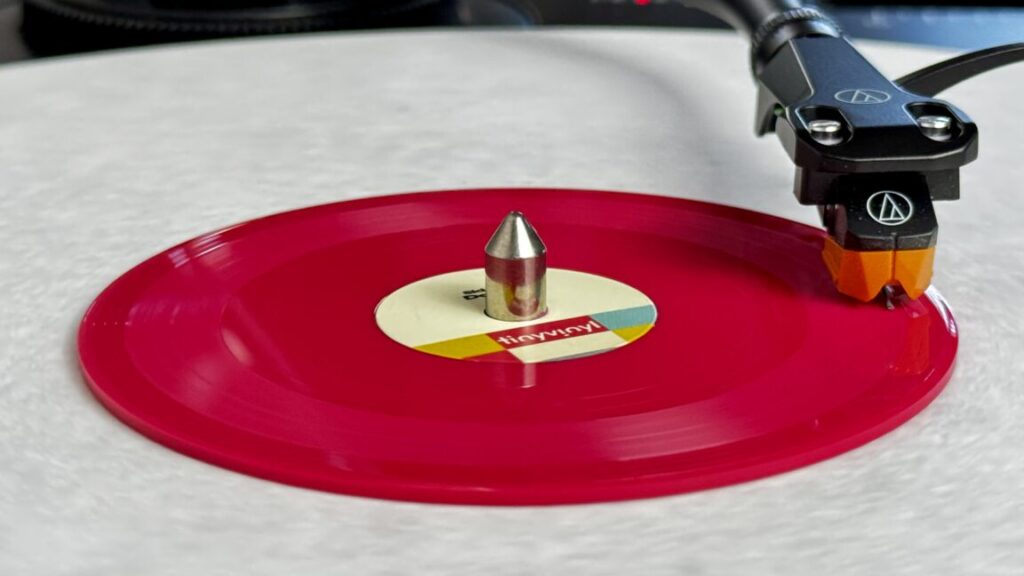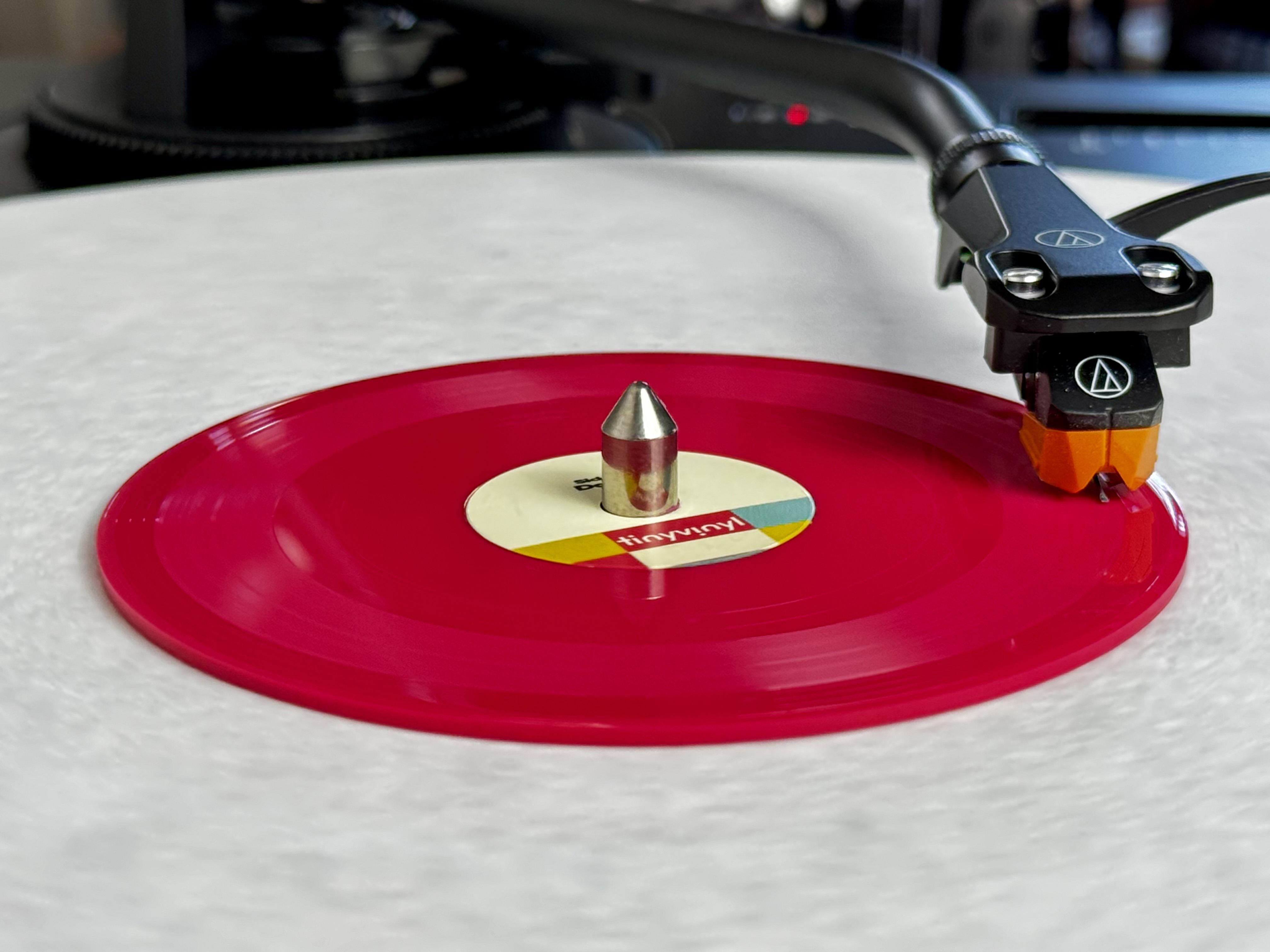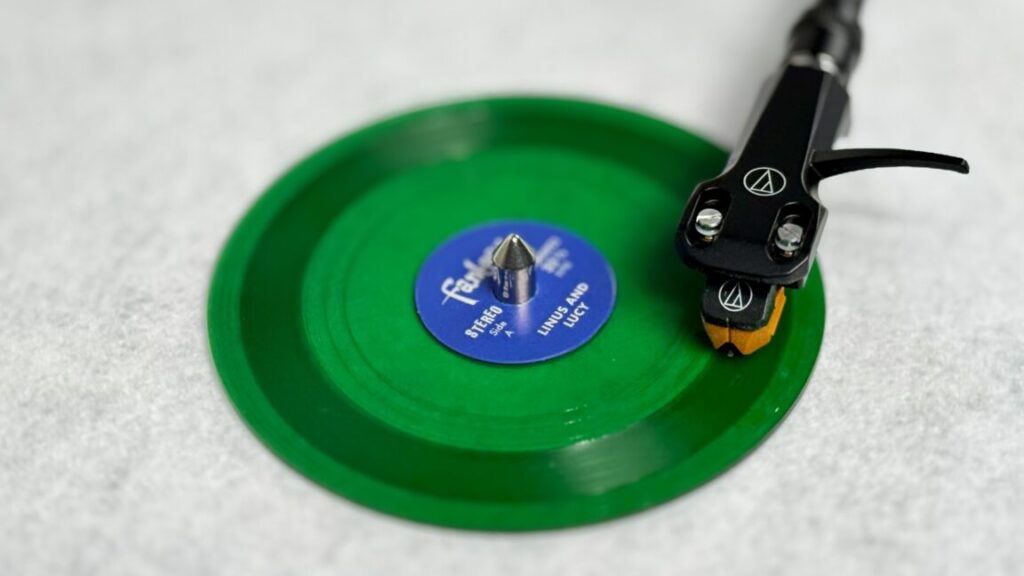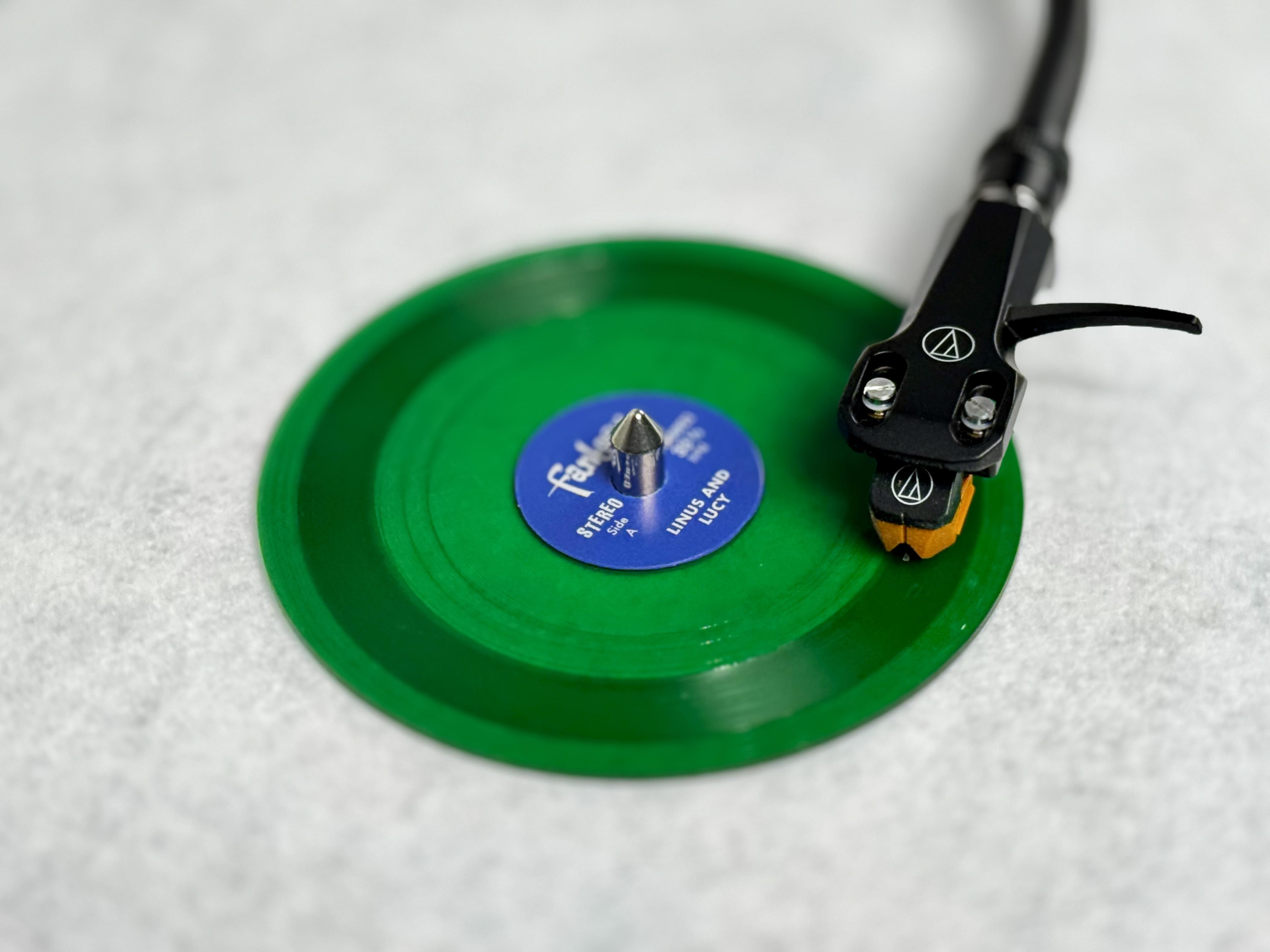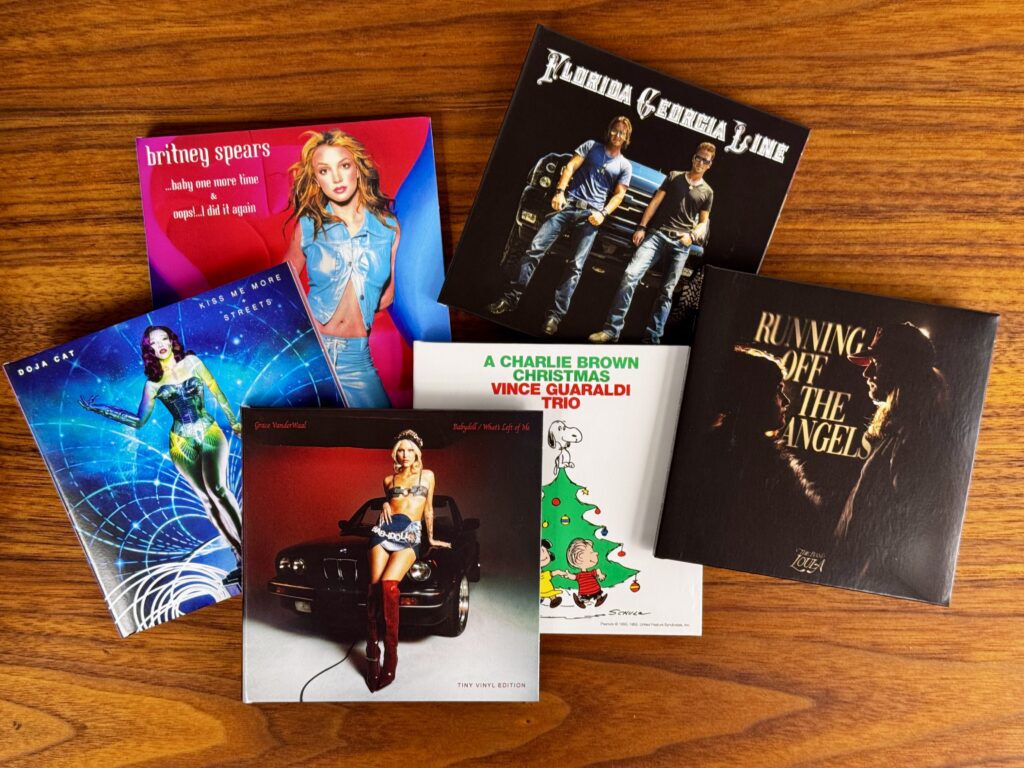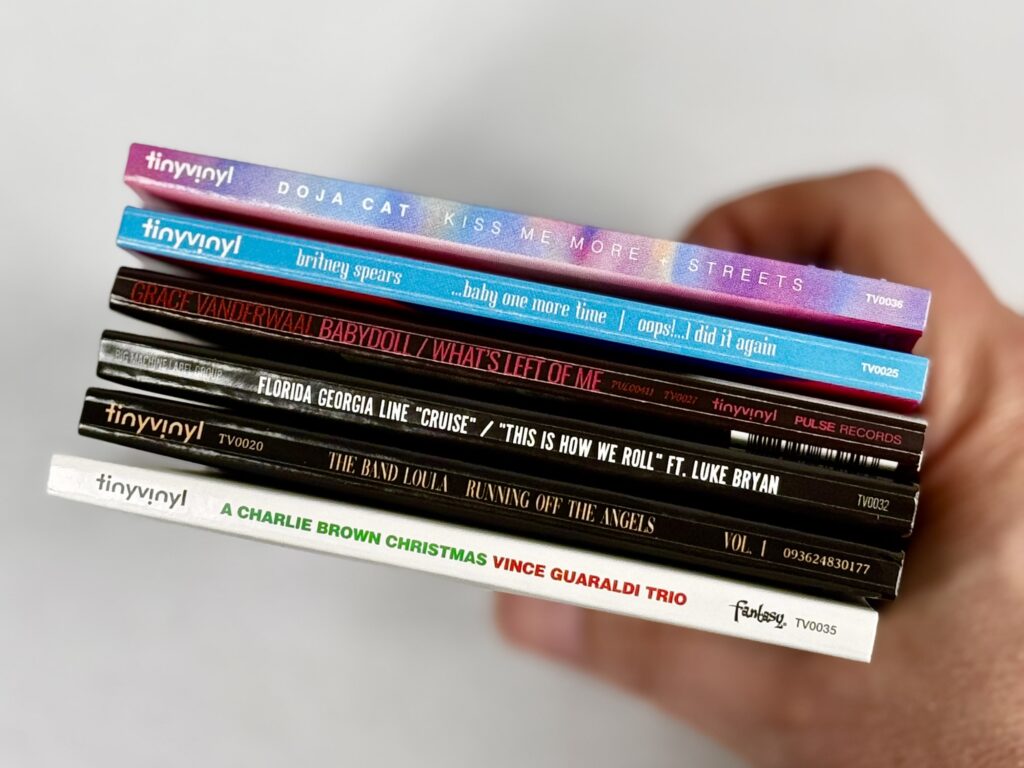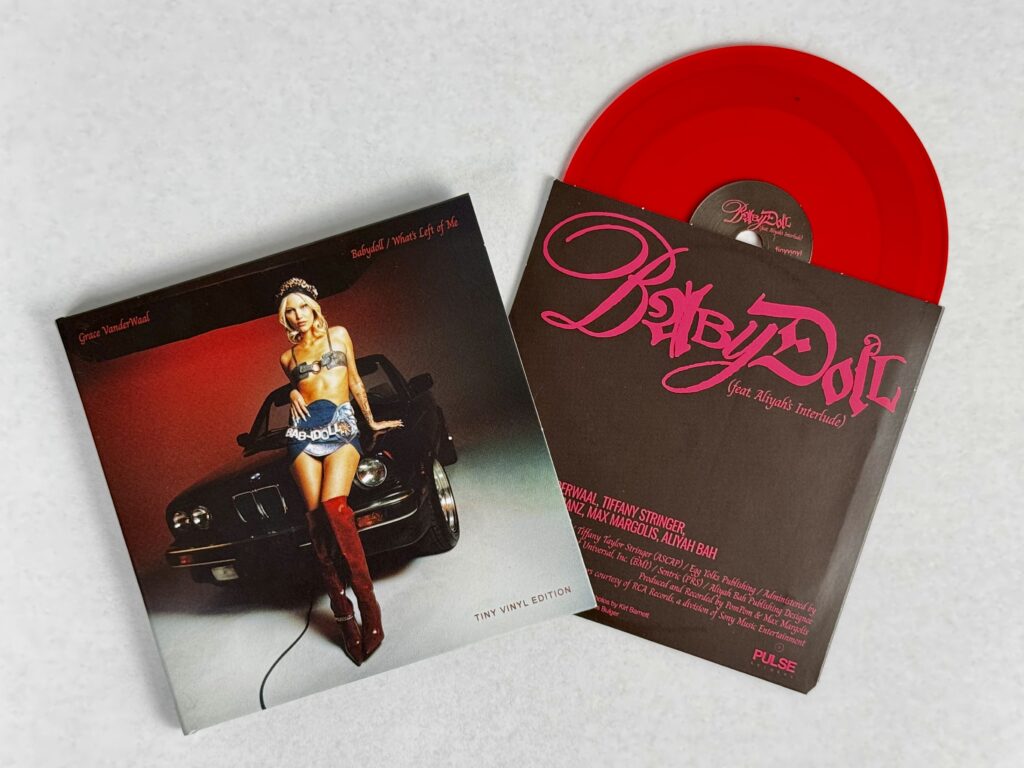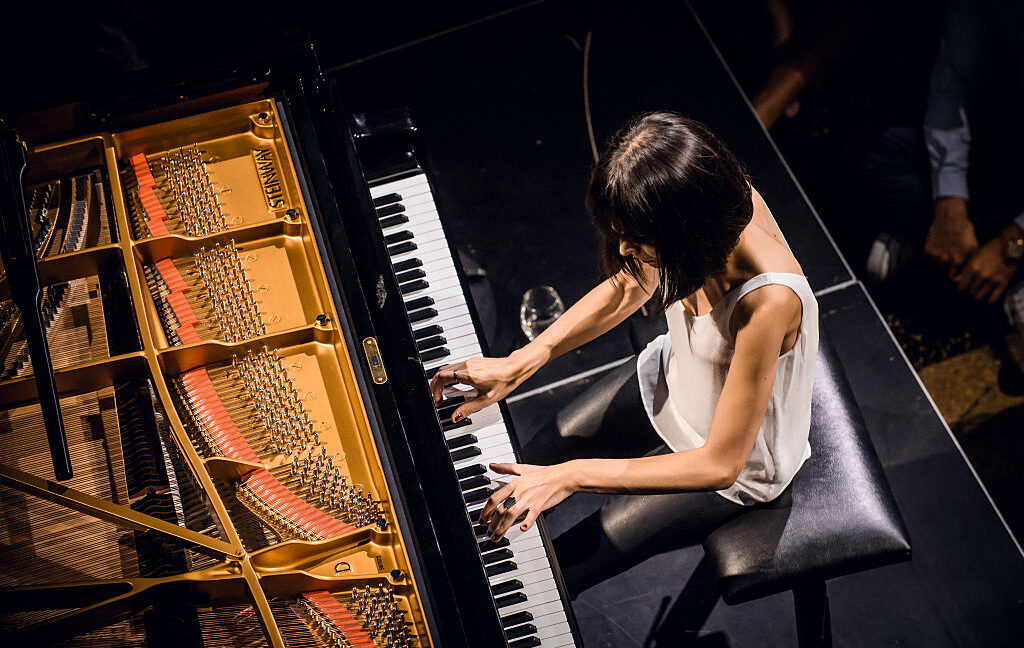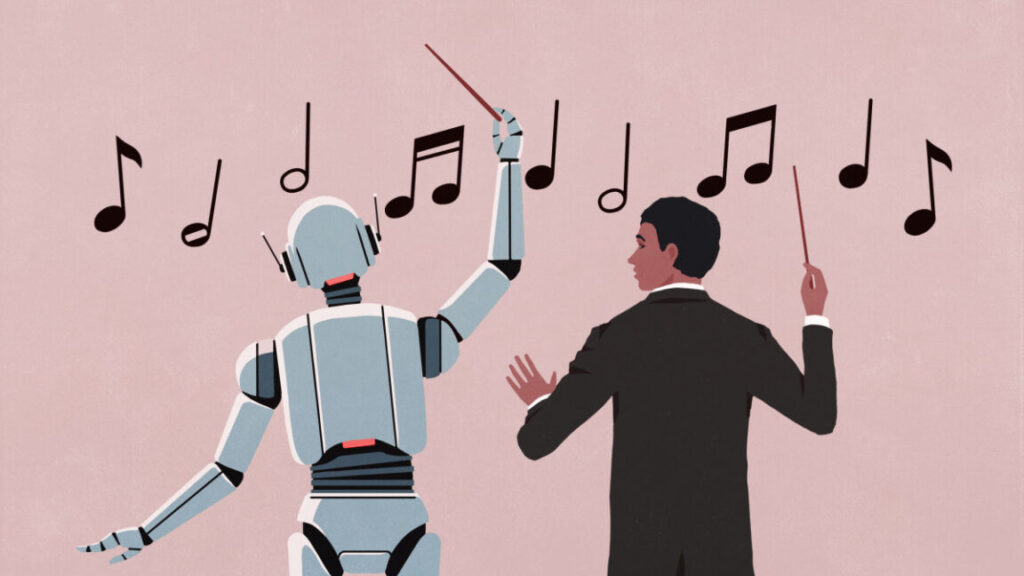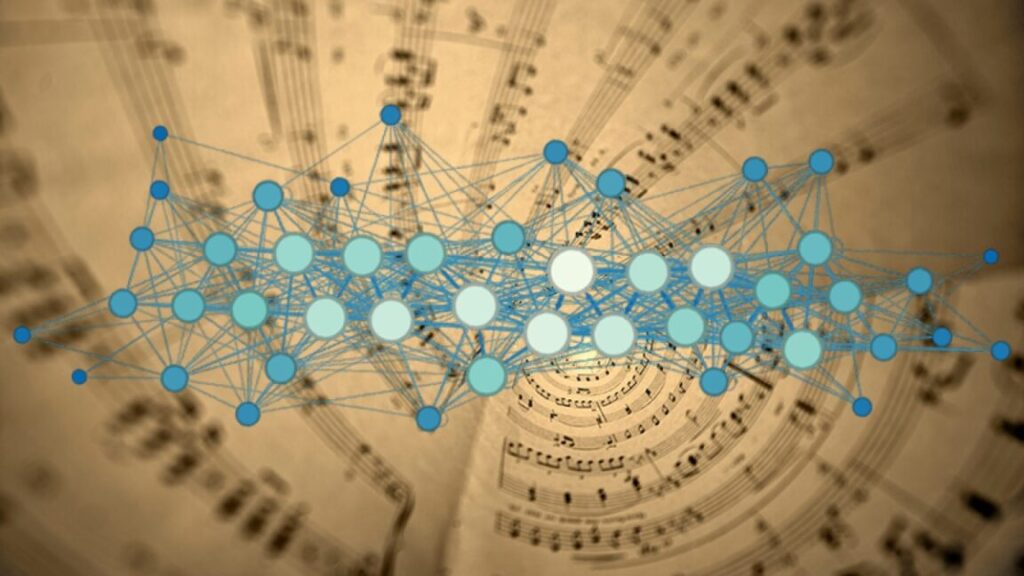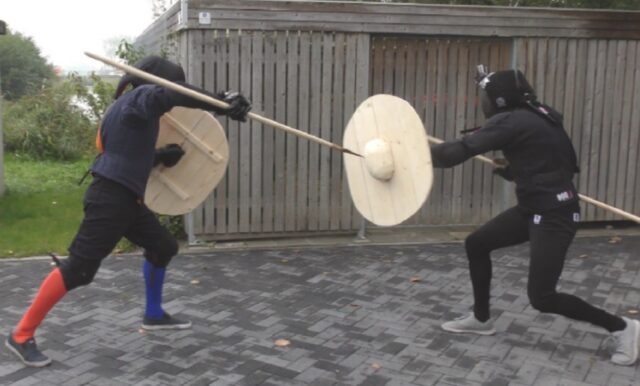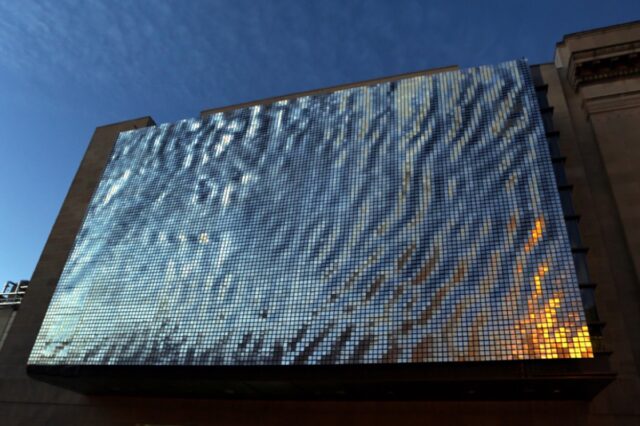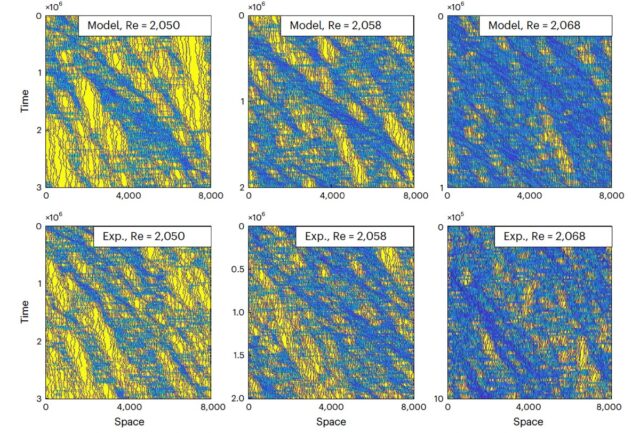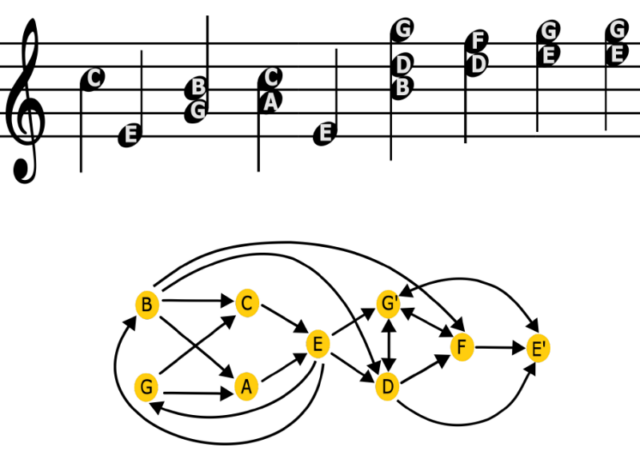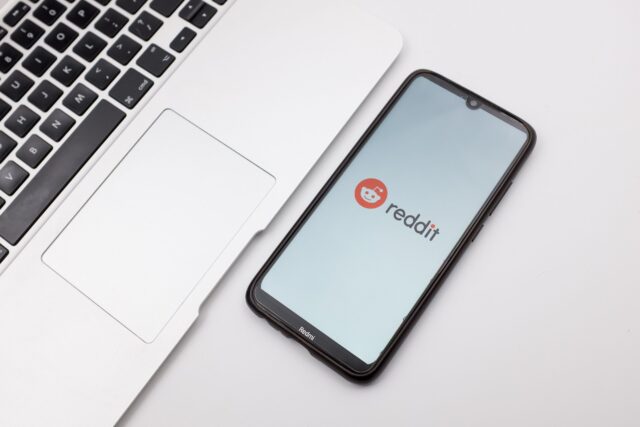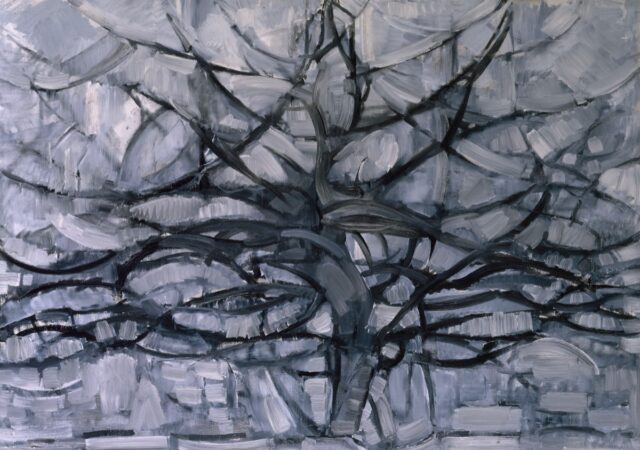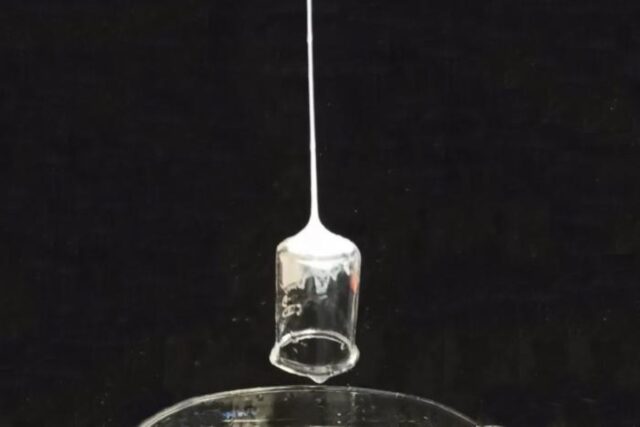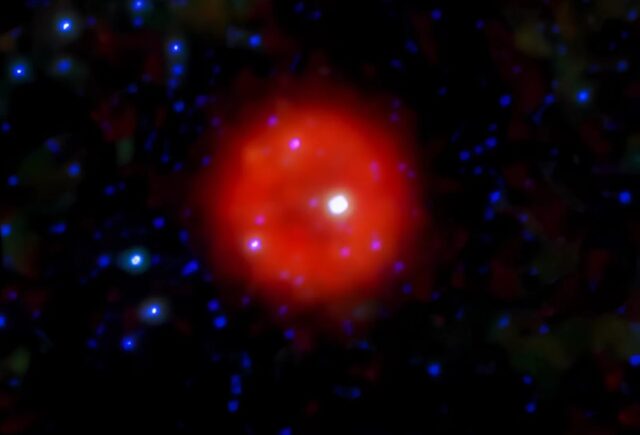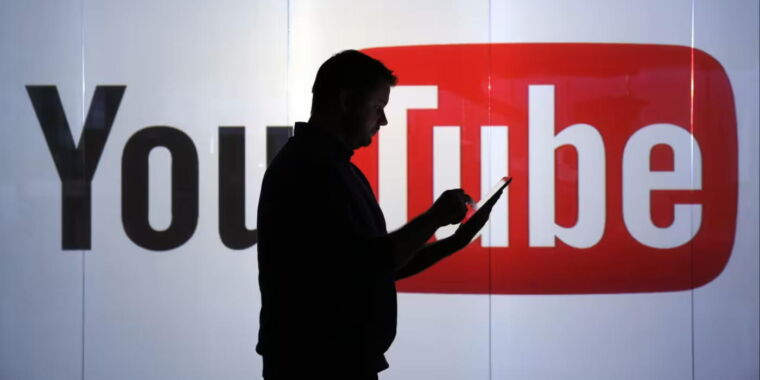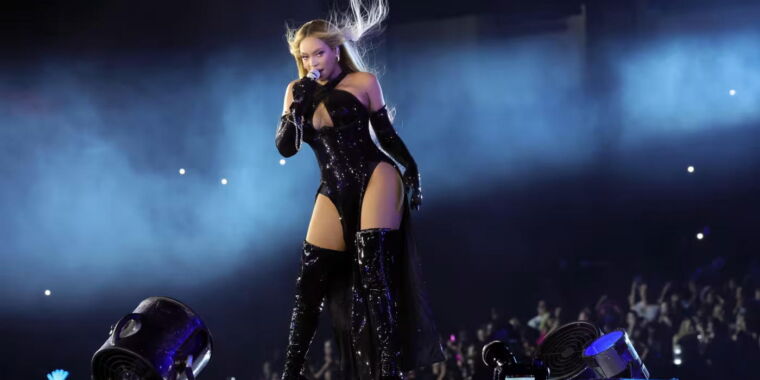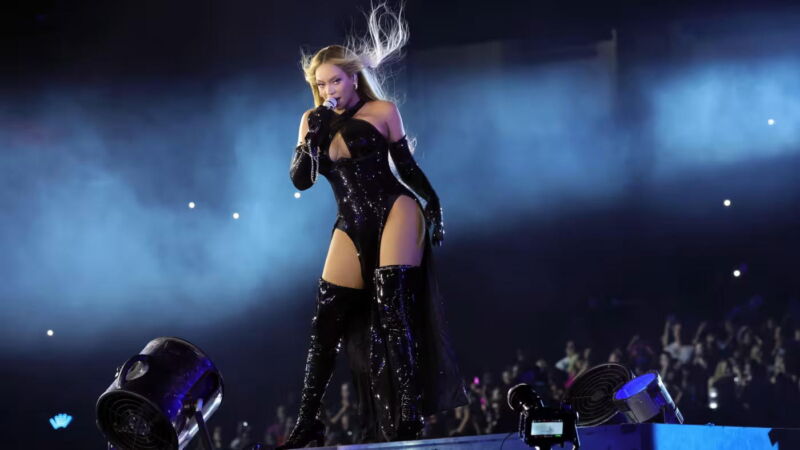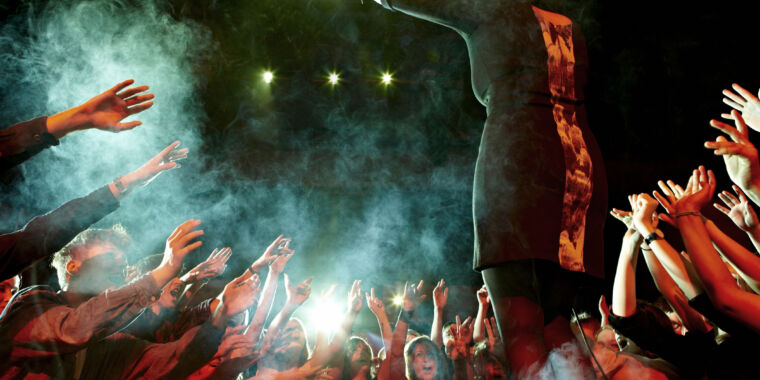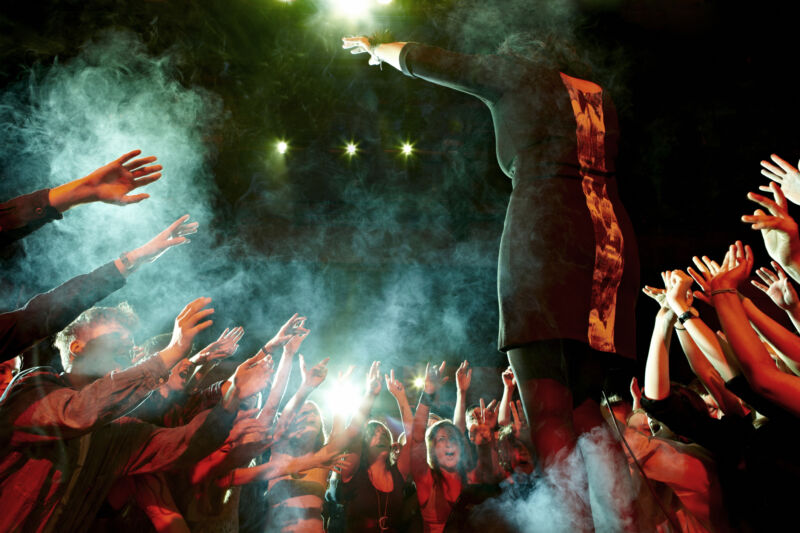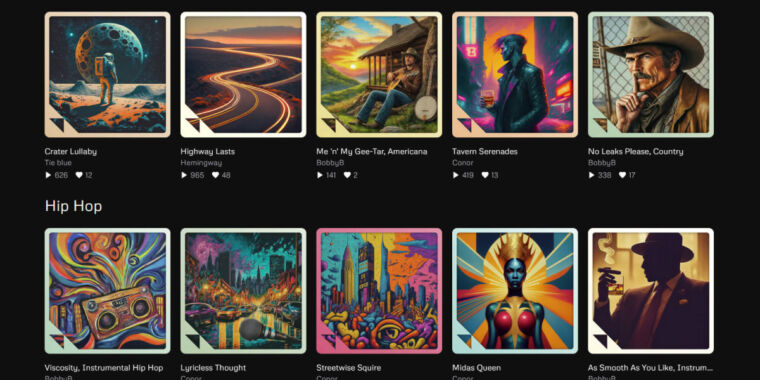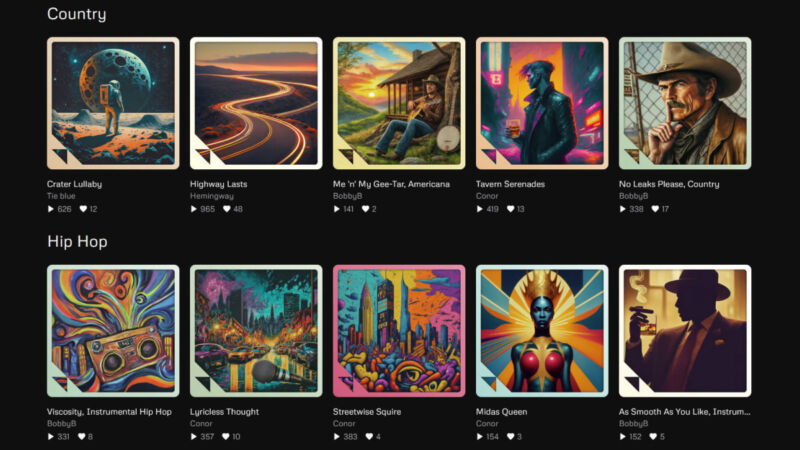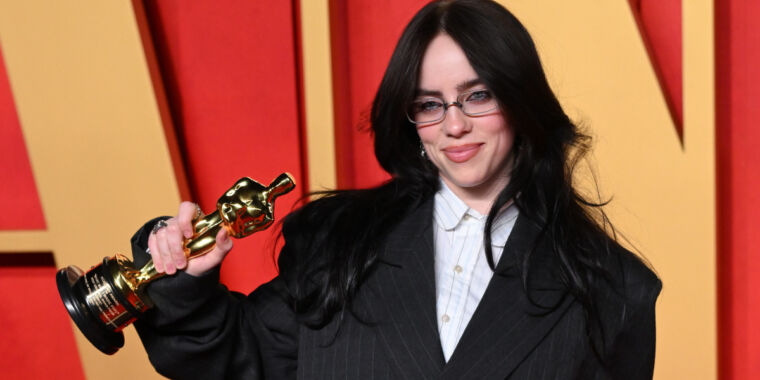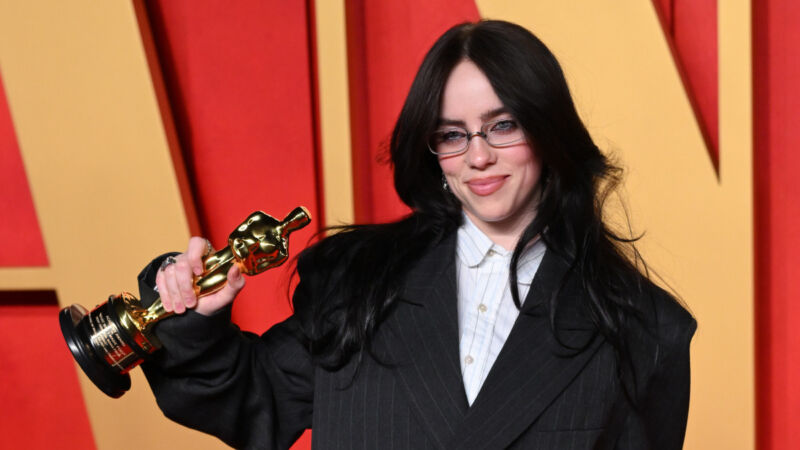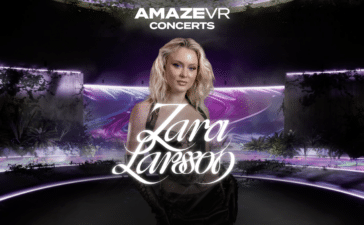We put the new pocket-size vinyl format to the test—with mixed results
We recently looked at Tiny vinyl, a new miniature vinyl single format developed through a collaboration between a toy industry veteran and the world’s largest vinyl record manufacturer. The 4-inch singles are pressed in a process nearly identical to standard 12-inch LPs or 7-inch singles, except everything is smaller. They have a standard-size spindle hole and play at 33⅓ RPM, and they hold up to four minutes of music per side.
Several smaller bands, like The Band Loula and Rainbow Kitten Surprise, and some industry veterans like Blake Shelton and Melissa Etheridge, have already experimented with the format. But Tiny Vinyl partnered with US retail giant Target for its big coming-out party this fall, with 44 exclusive titles launching throughout the end of this year.
Tiny Vinyl supplied a few promotional copies of releases from former America’s Got Talent finalist Grace VanderWaal, The Band Loula, country pop stars Florida Georgia Line, and jazz legends the Vince Guaraldi Trio so I could get a first-hand look at how the records actually play. I tested these titles as well as several others I picked up at retail, playing them on an Audio Technica LP-120 direct drive manual turntable connected to a Yamaha S-301 integrated amplifier and playing through a pair of vintage Klipsch kg4 speakers.
I also played them out on a Crosley portable suitcase-style turntable, and for fun, I tried to play them on the miniature RSD3 turntable made for 3-inch singles to try to see what’s possible with a variety of hardware.
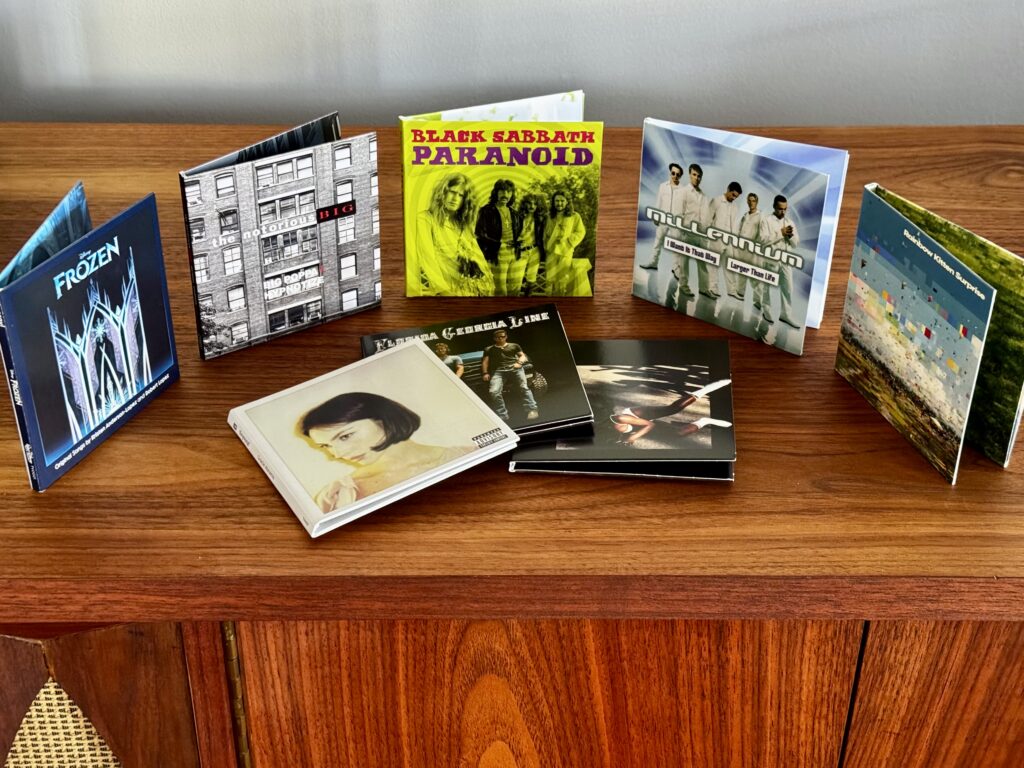
Tiny Vinyl releases cover several genres, including hip-hop, rock, country, pop, indie, and show tunes. Credit: Chris Foresman
Automatic turntables need not apply
First and foremost, I’ll note that the 4-inch diameter is essentially the same size as the label on a standard 12-inch LP. So any sort of automatic turntable won’t really work for 4-inch vinyl; most aren’t equipped to set the stylus at anything other than 12 inches or 7 inches, and even if they could, the automatic return would kick in before reaching the grooves where the music starts. Some automatic turntables allow switching to a manual mode, but they otherwise cannot play Tiny Vinyl records.
But if you have a turntable with a fully manual tonearm—including a wide array from DJ-style direct drive turntables or audiophile belt-drive turntables like those from Fluance, U-turn, or Pro-ject—you’re in luck. The tonearm can be placed on these records, and they will track the grooves well.
Lining up the stylus can be a challenge with such small records, but once it’s in place, the stylus on my LP120—a nude elliptical—tracked well. I also tried a few listens with a standard conical stylus since that’s what would be most common across a variety of low- and mid-range turntables. The elliptical stylus tracked slightly better in our experience; higher-end styli may track the extremely fine grooves even better but would probably be overkill given that the physical limitations of the format introduce some distortion, which would likely be more apparent with such gear.
While Tiny Vinyl will probably appeal most to pop music fans, I played a variety of music styles, including rock, country, dance pop, hip-hop, jazz, and even showtunes. The main sonic difference I noted when a direct comparison was available was that the Tiny Vinyl version of a track tended to sound quieter than the same track playing on a 12-inch LP at the same volume setting on the amplifier.

This Kacey Musgraves Tiny Vinyl includes songs from her album Deeper Well. Credit: Chris Foresman
It’s not unusual for different records to be mastered at different volumes; making the overall sound quieter means smaller modulations in the groove so they can be placed closer together. This is true for any album that has a side running longer than about 22 minutes, but it’s especially important to maintain the four-minute runtime on Tiny Vinyl. (This is also why the last song or two on many LP slides tend to be quieter or slower songs; it’s easier for these songs to sound better at the center of the record, where linear tracking speed decreases.)
That said, most of the songs I listened to tended to have a slight but audible increase in distortion as the grooves approached the physical limits of alignment for the stylus. This was usually only perceptible in the last several seconds of a song, which more discerning listeners would likely find objectionable. But sound quality overall is still comparable to typical vinyl records. It won’t compare to the most exacting pressings from the likes of Mobile Fidelity Labs, for instance, but then again, the sort of audiophile who would pay for the equipment to get the most out of such records probably won’t buy Tiny Vinyl in the first place, except perhaps as a conversation piece.
I also tried playing our Tiny Vinyl on a Crosley suitcase-style turntable since it has a manual tone arm. The model I have on hand has an Audio Technica AT3600L cartridge and stereo speakers, so it’s a bit nicer than the entry-level Cruiser models you’ll typically find at malls or department stores. But these are extremely popular first turntables for a lot of young people, so it seemed reasonable to consider how Tiny Vinyl sounds on these devices.
Unfortunately, I couldn’t play Tiny Vinyl on this turntable. Despite having a manual tone arm and an option to turn off the auto-start and stop of the turntable platter, the Crosley platter is designed for 7-inch and 12-inch vinyl—the Tiny Vinyl we tried wouldn’t even spin on the turntable without the addition of a slipmat of some kind.
Once I got it spinning, though, the tone arm simply would not track beyond the first couple of grooves before hitting some physical limitation of its gimbal. Since many of the suitcase-style turntables often share designs and parts, I suspect this would be a problem for most of the Crosley, Victrola, or other brands you might find at a big-box retailer.
Some releases really take advantage of the extra real estate of the gatefold jacket and printed inner sleeve, Chris Foresman
Additionally, I compared the classic track “Linus and Lucy” from A Charlie Brown Christmas with a 2012 pressing of the full album, as well as the 2019 3-inch version using an adapter, all on the LP-120, to give readers the best comparison across formats.
Again, the LP version of the seminal soundtrack from A Charlie Brown Christmas sounded bright and noticeably louder than its 4-inch counterpart. No major surprises here. And of course, the LP includes the entire soundtrack, so if you’re a big fan of the film or the kind of contemplative, piano-based jazz that Vince Guaraldi is famous for, you’ll probably spring for the full album.
The 3-inch version of “Linus and Lucy” unsurprisingly sounds fairly comparable to the Tiny Vinyl version, with a much quieter playback at the same amplifier settings. But it also sounds a lot noisier, likely due to the differences in materials used in manufacturing.
Though 3-inch records can play on standard turntables, as I did here, they’re designed to go hand-in-hand with one of the many Crosley RSD3 variants released in the last five years, or on the Crosley Mini Cruiser turntable. If you manage to pick up an original 8ban player, you could get the original lo-fi, “noisy analog” sound that Bandai had intended as well. That’s really part of the 3-inch vinyl aesthetic.
Newer 3-inch vinyl singles are coming with a standard spindle hole, which makes them easier to play on standard turntables. It also means there are now adapters for the tiny spindle to fit these holes, so you can technically put a 4-inch single on them. But due to the design of the tonearm and its rest, the stylus won’t swing out to the edge of Tiny Vinyl; instead, you can only play starting at grooves around the 3-inch mark. It’s a little unfortunate because it would otherwise be fun to play these miniature singles on hardware that is a little more right-sized ergonomically.

Big stack of tiny records. Credit: Chris Foresman
Four-inch Tiny Vinyl singles, on the other hand, are intended to be played on standard turntables, and they do that fairly well as long as you can manually place the tonearm and it’s not otherwise limited physically from tracking its grooves. The sound was not expected to compare to a quality 12-inch pressing, and it doesn’t. But it still sounds good. And especially if your available space is at a premium, you might consider a Tiny Vinyl with the most well-known and popular tracks from a certain album or artist (like these songs from A Charlie Brown Christmas) over a full album that may cost upward of $35.
Fun for casual listeners, not for audiophiles
Overall, Tiny Vinyl still offers much of the visceral experience of playing standard vinyl records—the cover art, the liner notes, handling the record as you place it on the turntable—just in miniature. The cost is less than a typical LP, and the weight is significantly less, so there are definite benefits for casual listeners. On the other hand, serious collectors will gravitate toward 12-inch albums and—perhaps less so—7-inch singles. Ironically, the casual listeners the format would most likely appeal to are the least likely to have the equipment to play it. That will limit Tiny Vinyl’s mass-market appeal outside of just being a cool thing to put on the shelf that technically could be played on a turntable.
The Good:
- Small enough to easily fit in a jacket pocket or the like
- Use less resources to make and ship
- With the gatefold jacket, printed inner sleeve, and color vinyl options, these look as cool as most full-size albums
- Plays fine on manual turntables
The Bad:
- Sound quality is (unsurprisingly) compromised
- Price isn’t lower than typical 7-inch singles
The Ugly:
- Won’t work on automatic-only turntables, like the very popular AT-LP60 series or the very popular suitcase-style turntables that are often an inexpensive “first” turntable for many
We put the new pocket-size vinyl format to the test—with mixed results Read More »
